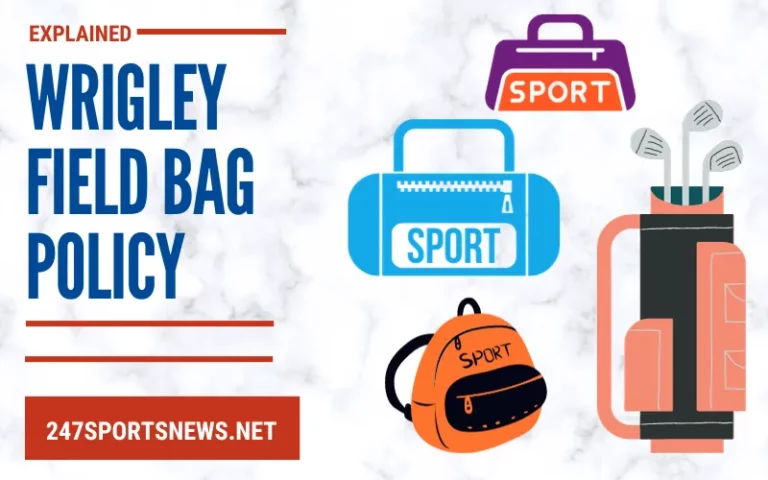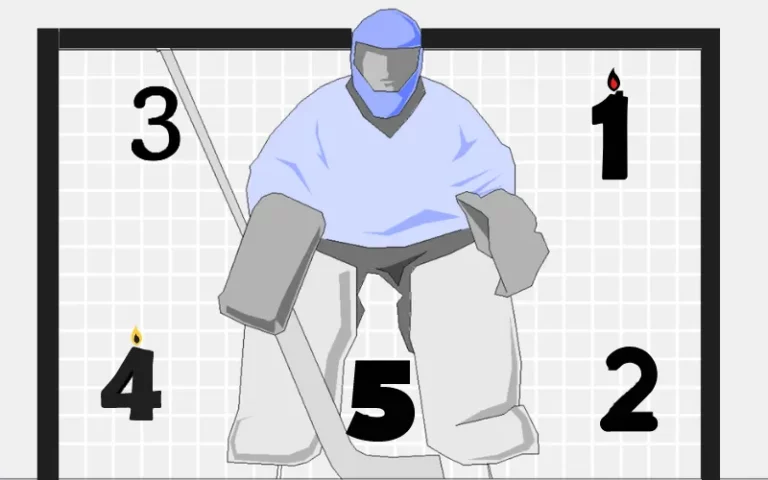What is Cross Checking in Hockey? | Purpose & Penalties
Body-checking, harsh play, and contact occur throughout hockey games. You must be willing to risk your life to support your team’s success because it is not for the weak of your heart. Many hockey players are accustomed to experiencing blood, sweat, and tears. Yet it’s not a free-for-all in the sport. Players will suffer consequences if they act too aggressively or in ways against the rules. Cross-checking carries one of these penalties. In this article, we will cover what is Cross-checking in hockey and all the related details.
Cross-checking in Hockey:
Cross-checking is a form of hit in which a player horizontally grips the shaft of their hockey stick with both hands and strikes a member of the other team hard. Cross-checking is frequently simple to spot and flag as a penalty because the stick is the point of contact and because it is usually a fairly dangerous move.
Cross-checking is covered by Rule 59 of the NHL (National Hockey League) rulebook. According to the rule, any player who cross-checks an opponent will suffer a minor or major penalty (depending on the severity). Players must be informed of the laws and rules governing cross-checking to protect everyone on the ice and maintain a fair and competitive game atmosphere.
What is the purpose of cross-checking?
Cross-checking is not permitted in hockey and serves no function permitted under the game’s rules. Instead of playing hockey or engaging in a fair physical battle for hockey, its main purpose is to push or shove an opponent with the shaft of the hockey stick. Cross-checking is not done to get the goal or to play the game of hockey properly. Rather, it is an aggressive and potentially harmful move that can cause harm, ruin fair play, and spark pointless physical fights on the ice.
Depending on the severity of the offense and any injuries that ensue, players who cross-check opponents may also face additional penalties, such as fines or suspensions.
Cross-checking Penalty in Hockey:

When a player pushes or shoves an opponent firmly with the shaft of their hockey stick, it is called cross-checking in hockey. Depending on the seriousness and purpose of the cross-check, this action is prohibited and may suffer varying degrees of penalties.
Different hockey leagues may have slightly varying cross-checking penalties, but in general, the following penalties apply:
Minor Penalty:
Most leagues impose a light penalty for a typical cross-check that is neither too forceful nor hazardous. The offending player must spend two minutes in the penalty area, and their side will be forced to play without a man during that time.
Major Penalty:
A major penalty is imposed if the cross-check is more forceful, aggressive, or injures the opponent. The player is given a five-minute punishment and kicked out of the contest.
Game Misconduct:
Extreme or deliberate may be punished by the referee with a game misconduct penalty, which entails removal from the game immediately and a separate five-minute penalty.
Match Penalty:
A match penalty may be assessed if the cross-check is determined to have been intended, cruel, or meant to harm the opponent. The player receiving a match penalty is immediately removed from the game and may face additional penalties, such as a suspension or fine.
Cross-checking is risky and can cause severe injuries, especially if it uses excessive power or is done to weak points of the body. Cross-checking penalties are aimed at preventing such conduct, advancing player security, and upholding the game’s fairness.
Can you Cross-check in Hockey?
In hockey, the word “cross-checking” can also be used in a different context. “Cross-checking” may be used to compare information from several sources to one another to make more informed conclusions when used in hockey coaching or strategic discussions. For instance, coaches may compare player statistics, game films from prior contests, and scouting reports to develop effective game plans and assess the strengths and weaknesses of their opponents.
Understanding the distinction between “cross-checking” in the context of improper gameplay and the strategic analysis component of coaching and planning is critical. Hockey’s unlawful cross-checking is punishable, but coaches and analysts can use strategic cross-checking as a useful tool to improve performance and decision-making.
What is the difference between Checking and Cross-checking in Hockey?
Cross-checking, as defined by the National Hockey League (NHL) rulebook, is when a player checks an opponent while holding the shaft of their stick in both hands. Every defensive tactic used in hockey is called checking. The opponent and the ball carrier are to be separated. Most sorts of checking don’t lead to penalties.
Slashing is a penalty in hockey committed when players swing their hockey stick violently and recklessly into an opponent.
In hockey, cross-checking is illegal. It is regarded as an illegal and harmful play that could result in penalties and disciplinary proceedings against the players.
Cross-checking is a reading technique that readers use to ensure they understand a text when discussing reading and literary analysis.





